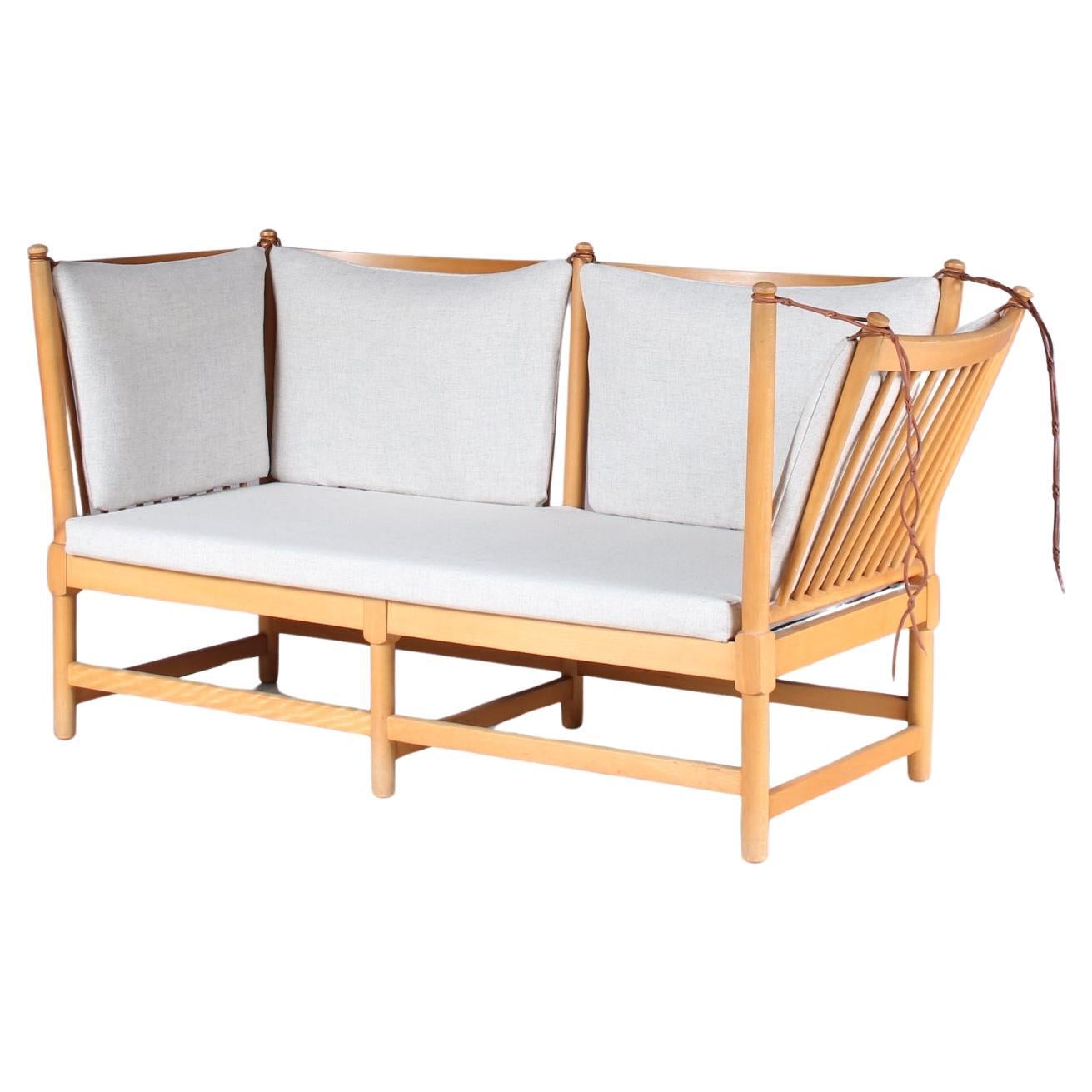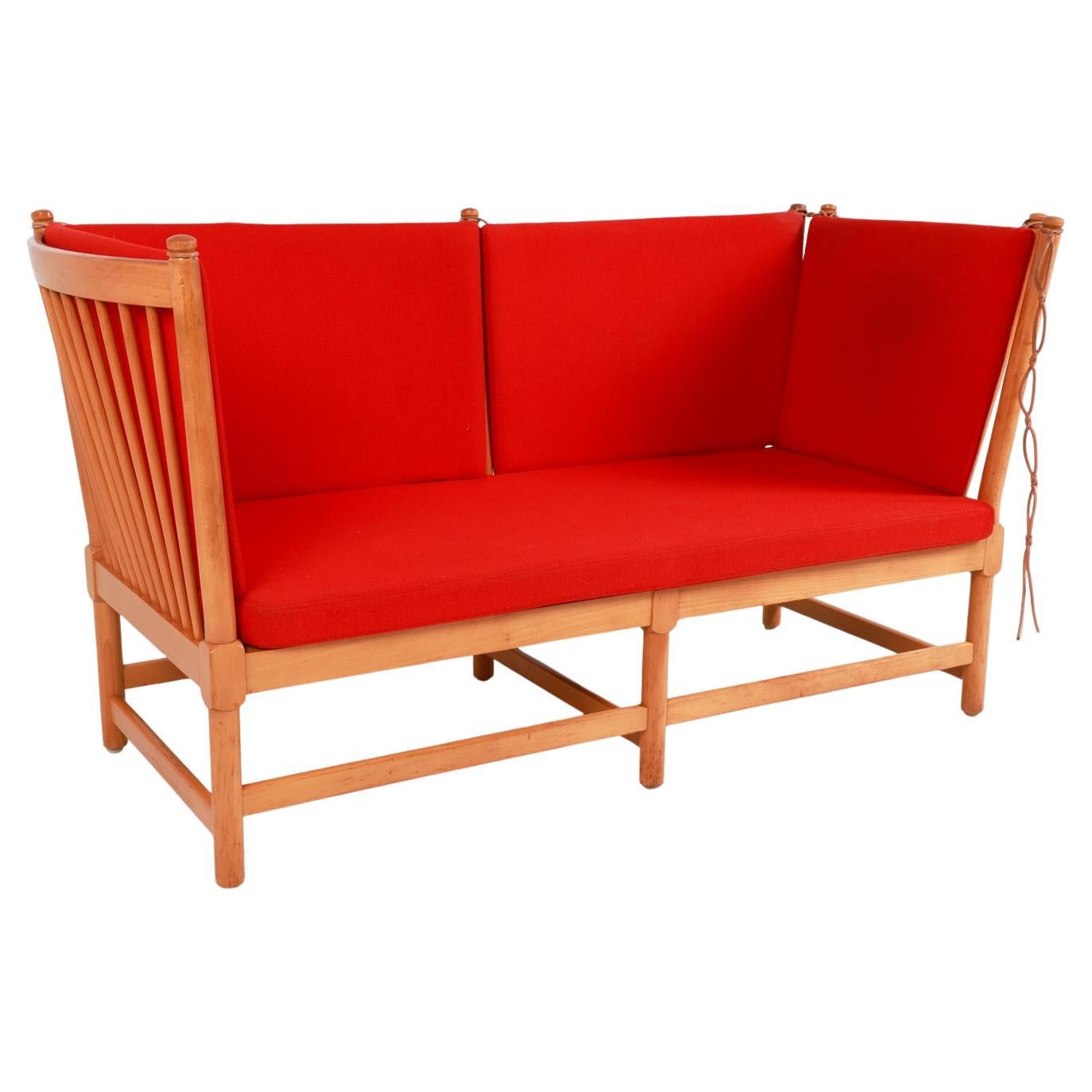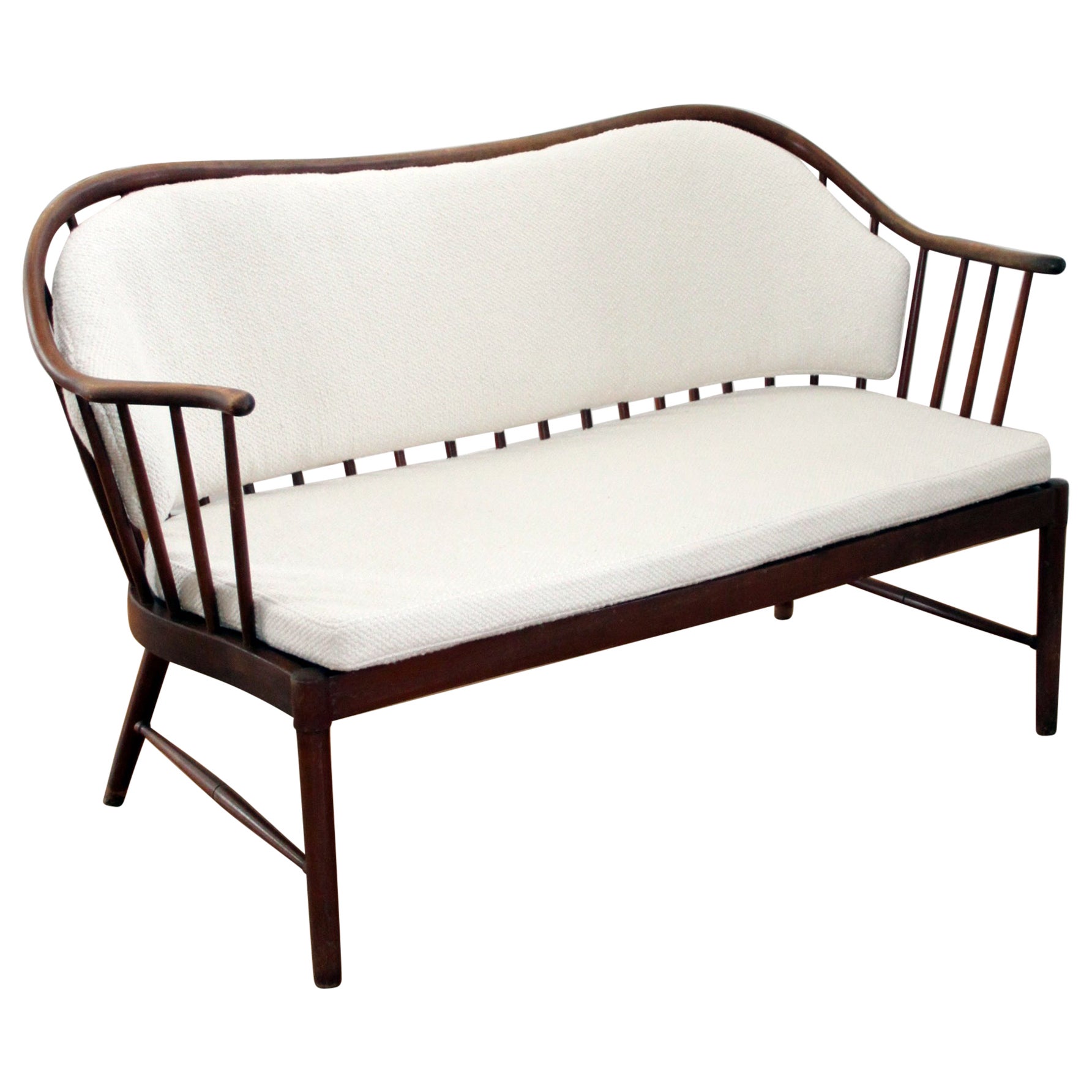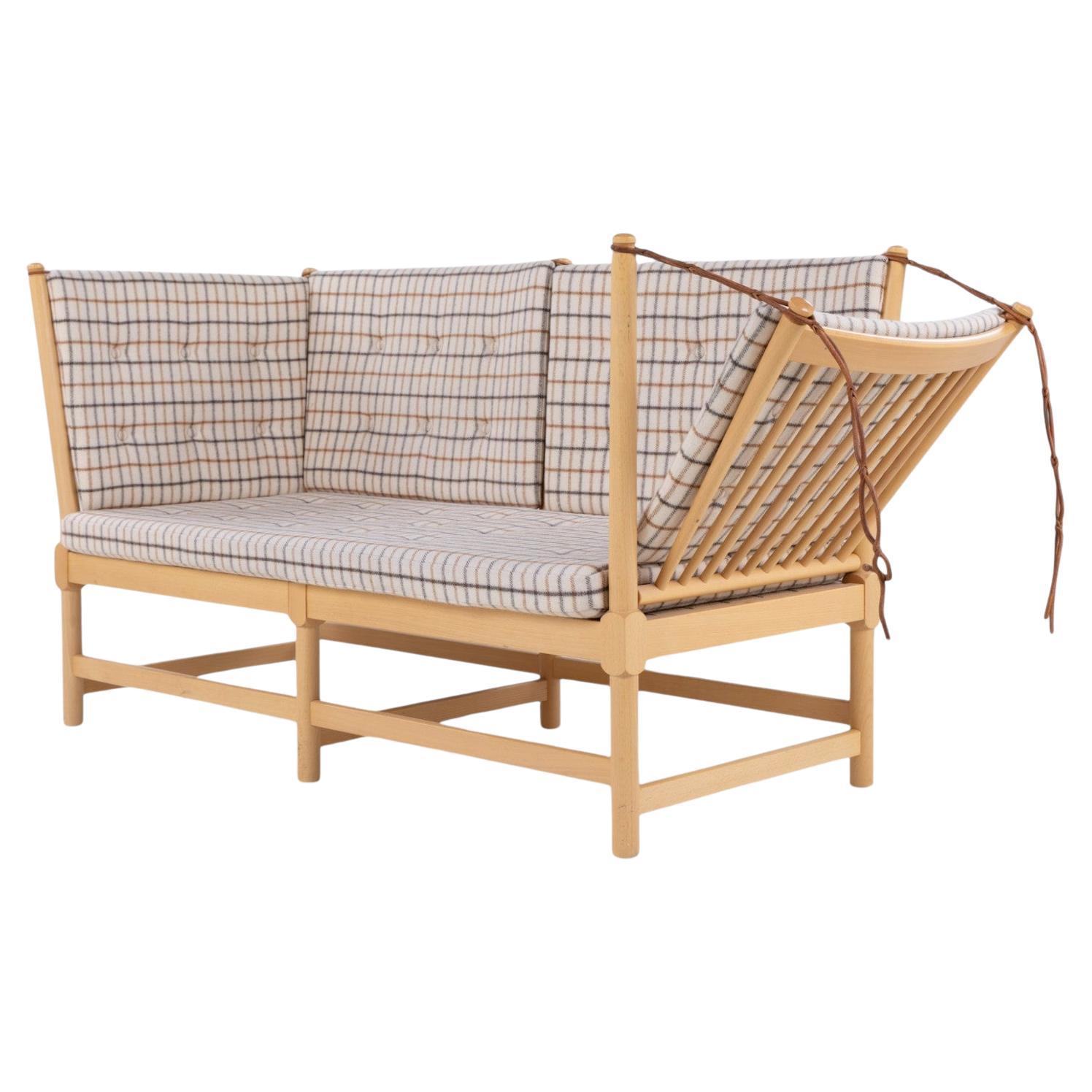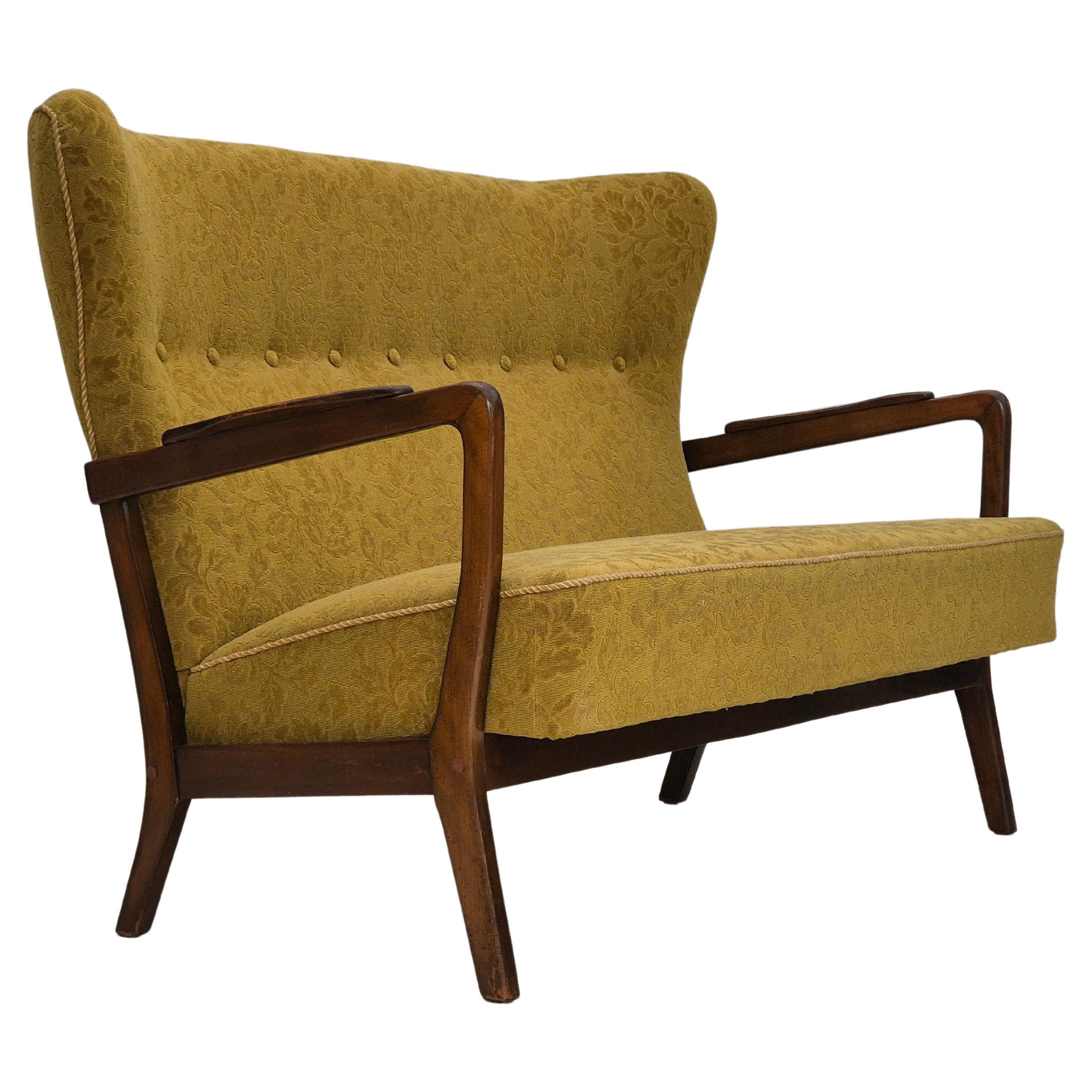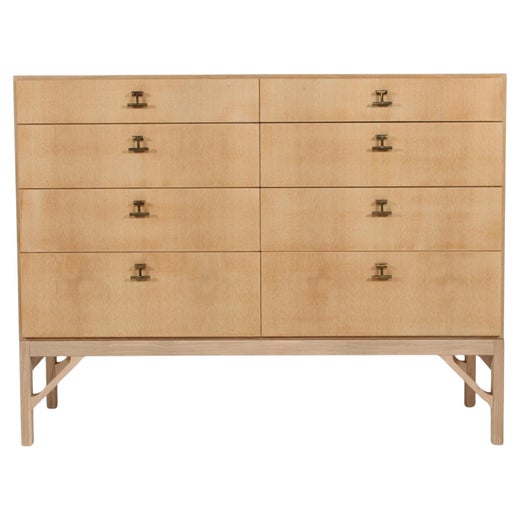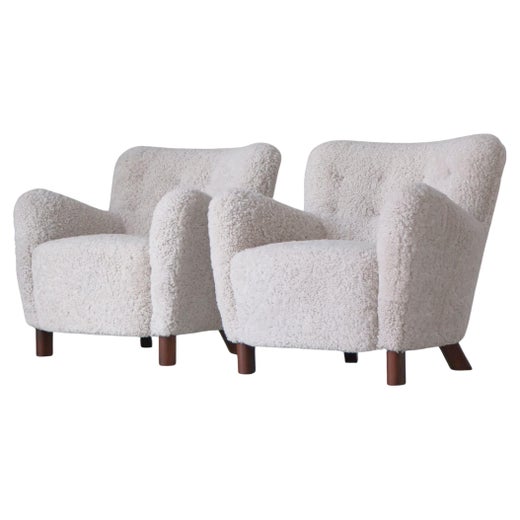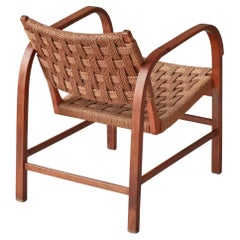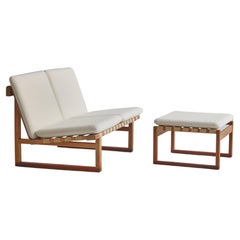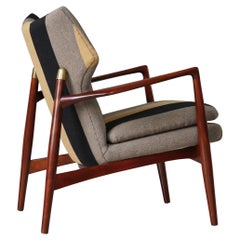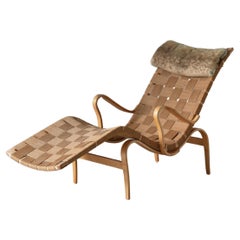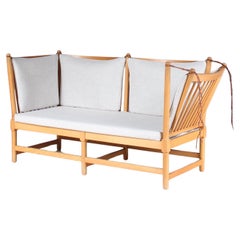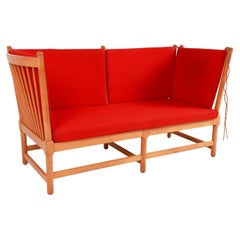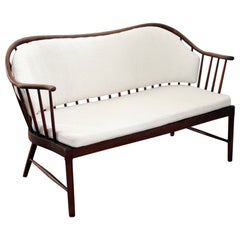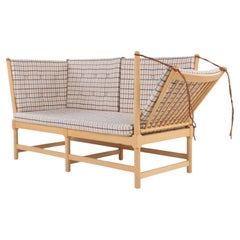Børge Mogensen "Spoke-back" Sofa by Fritz Hansen, 1963, Danish Modern
About the Item
- Creator:Fritz Hansen (Maker),Børge Mogensen (Designer)
- Dimensions:Height: 33.86 in (86 cm)Width: 63 in (160 cm)Depth: 29.93 in (76 cm)Seat Height: 15.75 in (40 cm)
- Style:Scandinavian Modern (Of the Period)
- Materials and Techniques:
- Place of Origin:
- Period:
- Date of Manufacture:1963
- Condition:Wear consistent with age and use. Very good original condition with few signs of wear to wood frame and cushions.
- Seller Location:Odense, DK
- Reference Number:1stDibs: LU3793138475072
Børge Mogensen
Among the great mid-20th century Danish furniture designers, Børge Mogensen distinguished himself with his faith to traditional values of craftsmanship and honesty of materials.
While peers such as Hans Wegner, Finn Juhl and Arne Jacobsen designed some of the most striking and now iconic furnishings of the era, Mogensen focused on making chairs, sofas and other pieces that were simple, durable and comfortable — and in the long run perhaps more useful and better loved.
Mogensen studied under and later worked for Kaare Klint, a master cabinetmaker whose chief tenets were quality of construction and simplicity of line. Klint was a classicist, who believed that furniture forms should evolve from those of historical models. So, too, in his way was Mogensen, as two of his best-known earlier pieces attest.
His 1945 Spokeback sofa, with hinged arms that can be lowered to facilitate lounging, is a reinterpretation of the venerable Knole settee. With the oval silhouette of its plywood backrest and waterdrop-shaped cutouts, Mogensen’s Shell chair, designed in 1949, can be seen as a novel take on early 19th-century Empire side chairs.
Yet Mogensen shared the aesthetical sensibilities of his most forward-looking colleagues. His cabinets deploy the same spare geometries and lushly figured woods as those of Ludwig Mies van der Rohe and his disciple Florence Knoll, the chief difference being that Mies and Knoll used chrome steel for the frames and legs of their pieces. The brawny oak frames and slung leather seats and backrests of Mogensen’s Hunting chair (1950) and Spanish chair (1958) display the same hefty construction and appreciation of natural materials seen in the work of Charlotte Perriand and Sergio Rodrigues.
Mogensen designed for function more than sculptural effect. While his chairs may not be the first pieces in a décor to draw the eye, they are often the first to draw in those looking for a comfortable seat.
Find vintage Børge Mogensen dining tables, bookcases and other Scandinavian modern furniture for sale on 1stDibs.
Fritz Hansen
When the Copenhagen-based furniture maker Fritz Hansen opened for business more than 140 years ago, the company — which today styles itself The Republic of Fritz Hansen — adhered to the traditional, time-honored Danish values of craftsmanship in woodworking and joinery. Yet thanks to the postwar innovations of Arne Jacobsen and others, Fritz Hansen would become the country’s leader in Scandinavian modern design using new, forward-looking materials and methods.
Fritz Hansen started his company in 1872, specializing in the manufacture of small furniture parts. In 1915, the firm became the first in Denmark to make chairs using steam-bent wood (a technique most familiar from birch used in the ubiquitous café chairs by Austrian maker Thonet). At the time, Fritz Hansen was best known for seating that featured curved legs and curlicue splats and referenced 18th-century Chippendale designs.
In the next few decades, the company promoted simple, plain chairs with slatted backs and cane or rush seats designed by such proto-modernist masters as Kaare Klint and Søren Hansen. Still, the most aesthetically striking piece Fritz Hansen produced in the first half of the 20th century was arguably the China chair of 1944 by Hans Wegner — and that piece, with its yoke-shaped bentwood back- and armrest, was based on seating manufactured in China during the Ming dynasty. (Wegner was moved by portraits he’d seen of Danish merchants in the Chinese chairs.)
Everything changed in 1952 with Arne Jacobsen’s Ant chair. The collaboration between the architect and Fritz Hansen officially originated in 1934 — that year, Jacobsen created his inaugural piece for the manufacturer, the solid beechwood Bellevue chair for a restaurant commission. The Ant chair, however, was the breakthrough.
With assistance from his then-apprentice Verner Panton, Jacobsen designed the Ant chair for the cafeteria of a Danish healthcare company called Novo Nordisk. The chair was composed of a seat and backrest formed from a single piece of molded plywood attached, in its original iteration, to three tubular metal legs. Its silhouette suggests the shape of the insect’s body, and the lightweight, stackable chair and its biomorphic form became an international hit.
Jacobsen followed with more plywood successes, such as the Grand Prix chair of 1957. The following year he designed the SAS Royal Hotel in Copenhagen and its furnishings, including the Egg chair and the Swan chair. Those two upholstered pieces, with their lush, organic frames made of fiberglass-reinforced polyurethane, have become the two chairs most emblematic of mid-20th-century cool. Moreover, the Egg and Swan led Fritz Hansen to fully embrace new man-made materials, like foam, plastic and steel wire used to realize the avant-garde creations of later generations of designers with whom the firm collaborated, such as Piet Hein, Jørn Utzon (the architect of the Sydney Opera House) and Verner Panton. If the Fritz Hansen of 1872 would not now recognize his company, today’s connoisseurs certainly do.
Find a collection of vintage Fritz Hansen tables, lounge chairs, sofas and other furniture on 1stDibs.
- ShippingRetrieving quote...Shipping from: Kerteminde, Denmark
- Return Policy
More From This Seller
View AllVintage 1930s Danish Scandinavian Modern Lounge Chairs
Seagrass, Beech
Vintage 1950s Danish Scandinavian Modern Sofas
Wool, Oak, Teak
Vintage 1950s Danish Scandinavian Modern Lounge Chairs
Beech
Vintage 1930s Danish Scandinavian Modern Chaise Longues
Beech
Vintage 1950s Danish Scandinavian Modern Lounge Chairs
Velvet, Oak
Vintage 1940s Danish Scandinavian Modern Lounge Chairs
Elm
You May Also Like
Mid-20th Century Danish Mid-Century Modern Sofas
Leather, Fabric, Beech
Mid-20th Century Danish Mid-Century Modern Sofas
Beech
Mid-20th Century Danish Mid-Century Modern Sofas
Wool, Beech
Mid-20th Century Danish Mid-Century Modern Sofas
Fabric, Beech
Vintage 1930s Danish Scandinavian Modern Sofas
Upholstery, Velvet, Beech, Fabric
Vintage 1960s Danish Scandinavian Modern Sofas
Wool, Cotton, Beech
